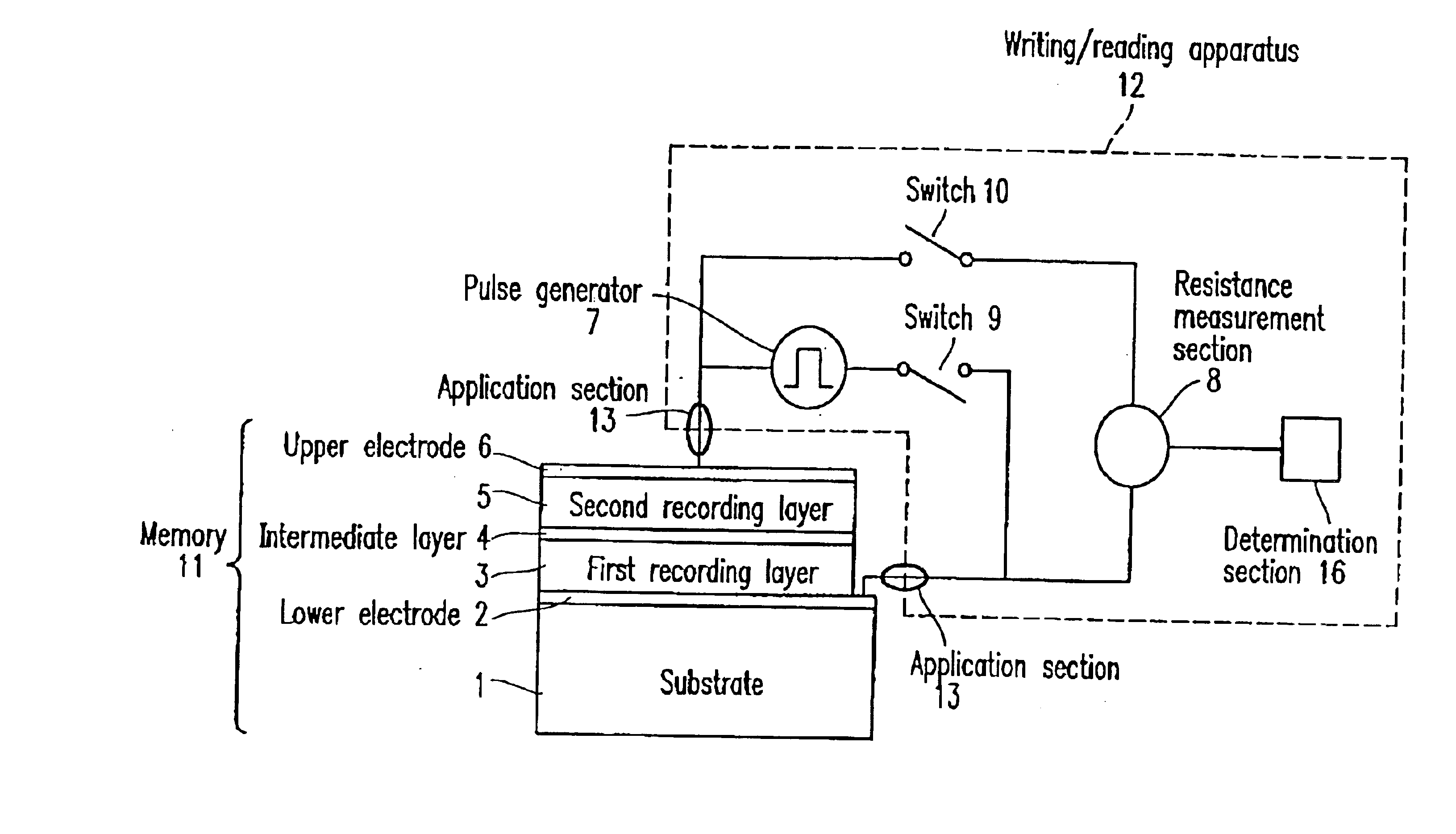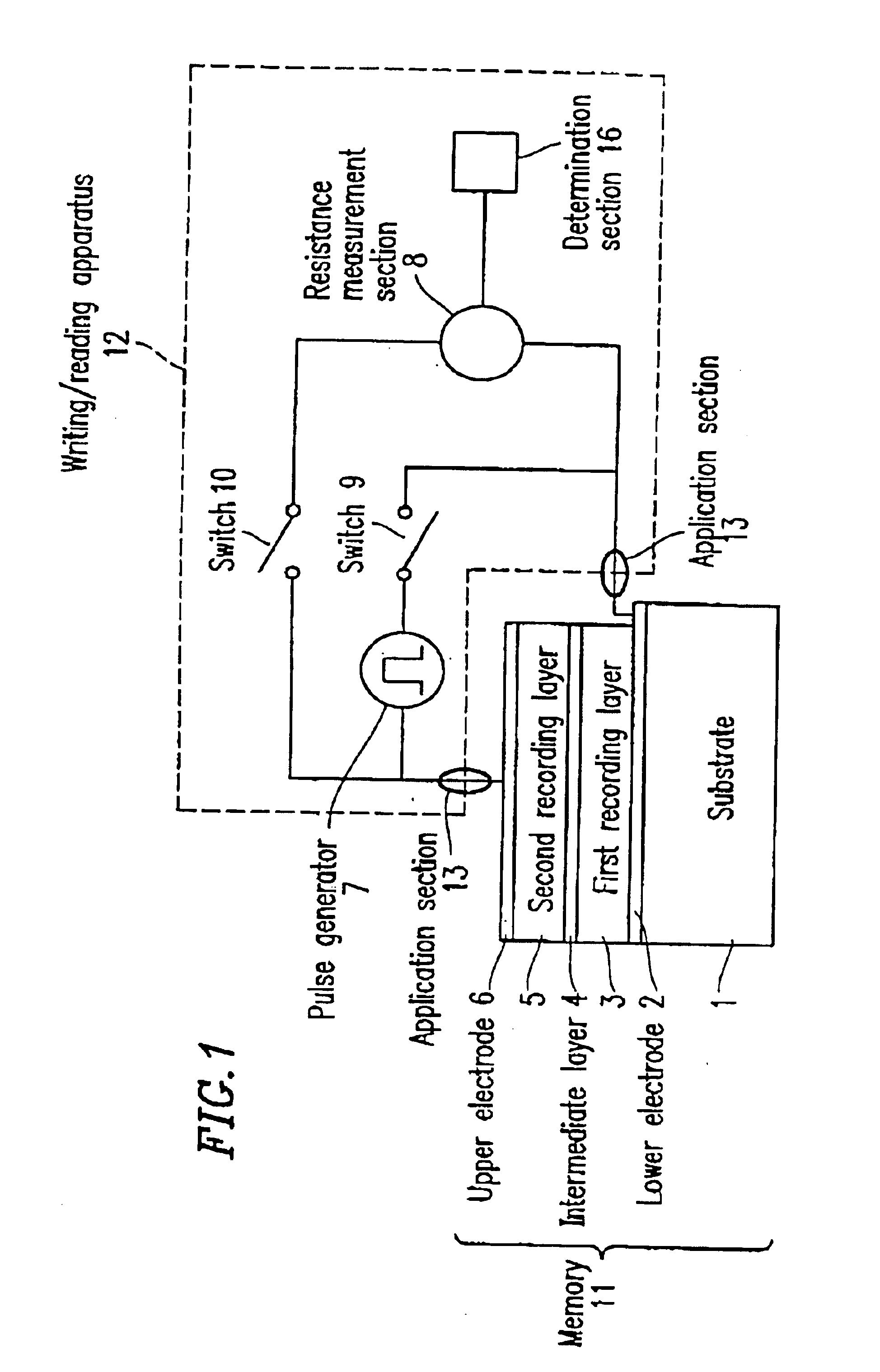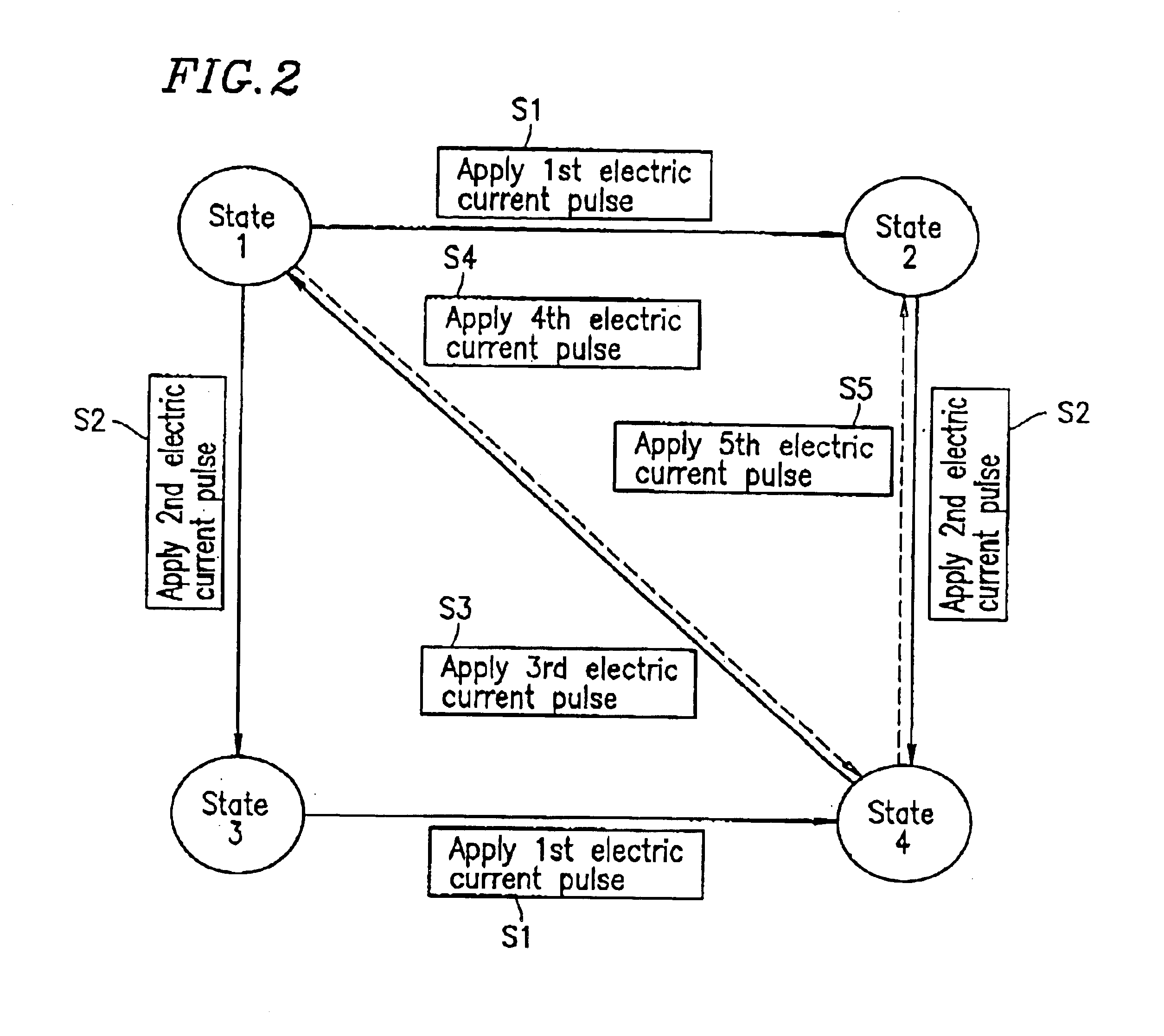Memory, writing apparatus, reading apparatus, writing method, and reading method
a writing apparatus and memory technology, applied in the field of phase-change memory, can solve the problems of limiting the increase in surface density, the inability to drastically increase the capacity of a phase-change memory, and the inability to control the phase state stepwise in a single recording layer, and achieve the effect of reducing the difficulty of stepwise control of the phase state rather than the control of the phase sta
- Summary
- Abstract
- Description
- Claims
- Application Information
AI Technical Summary
Benefits of technology
Problems solved by technology
Method used
Image
Examples
embodiment 1
The first recording layer 3 includes three elements, Ge, Sb, and Te. The second recording layer 5 includes a material system represented by (Sb-Te)-Ml where Ml is at least one selected from a group consisting of Ag, In, Ge, Sn, Se, Bi, Au, and Mn. In embodiment 1, the first recording layer 3 and the second recording layer 5 are Ge.sub.8 Sb.sub.2 Te.sub.11 and (Sb.sub.0.7 Te.sub.0.3).sub.95 Ge.sub.5, respectively.
In embodiment 1, the crystallization temperature T.sub.x1 of the first recording layer 3 and the crystallization temperature T.sub.x2 of the second recording layer 5 are 170.degree. C. and 200.degree. C., respectively. The crystallization time t.sub.x1 of the first recording layer 3 and the crystallization time t.sub.x2 of the second recording layer 5 are 130 ns and 80 ns, respectively.
Further, in embodiment 1, the lower electrode 2 of Pt has an area of 10 .mu.m.times.10 .mu.m and a thickness of 0.1 .mu.m. The first recording layer 3 of Ge.sub.8 Sb.sub.2 Te.sub.11 has an are...
embodiment 2
In embodiment 1, the memory 11 includes two recording layers. However, according to the present invention, the number of the recording layers included in a single memory is not limited to 2. In embodiment 2, a memory including N recording layers (N is a natural number greater than 2 (N>2)) is described.
FIG. 6 shows a memory 60 including N recording layers 62. Like elements are indicated by like reference numerals used in FIG. 1 and detailed descriptions thereof are omitted. The memory 60 includes a substrate 1, 1st to (N-1)th intermediate layers 61, the N recording layers 62, and an upper electrode 6.
The 1st to (N-1)th intermediate layers 61 are provided for the same reason as for the intermediate layer 4 of FIG. 1, i.e., provided for preventing atoms which constitute one of the N recording layers 62 from being diffusively moving therebetween. Preferably, the 1.sup.st to (N-1)th intermediate layers 61 are electrically conductive, and are made of a single metal material, such as Al, ...
PUM
 Login to View More
Login to View More Abstract
Description
Claims
Application Information
 Login to View More
Login to View More - R&D
- Intellectual Property
- Life Sciences
- Materials
- Tech Scout
- Unparalleled Data Quality
- Higher Quality Content
- 60% Fewer Hallucinations
Browse by: Latest US Patents, China's latest patents, Technical Efficacy Thesaurus, Application Domain, Technology Topic, Popular Technical Reports.
© 2025 PatSnap. All rights reserved.Legal|Privacy policy|Modern Slavery Act Transparency Statement|Sitemap|About US| Contact US: help@patsnap.com



